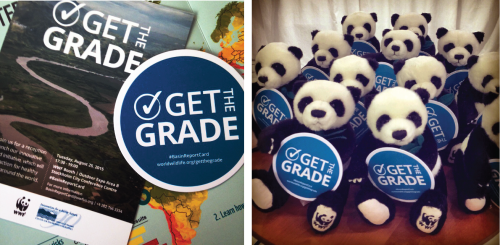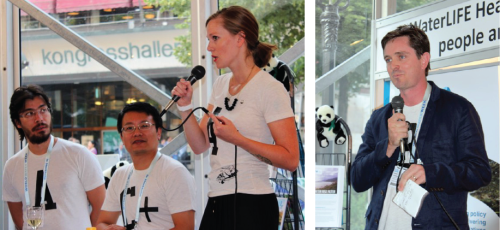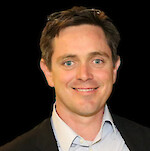Get the grade - Worldwide WWF-IAN partnership launches in Stockholm
Simon Costanzo ·This blog is part of the Basin Report Card Initiative: a partnership between the World Wildlife Fund (WWF) and the University of Maryland Center for Environmental Science (UMCES)
Our partnership with the World Wildlife Fund (WWF) was officially launched at World Water Week this past August 2015. This new partnership aims to widen the audience and uptake of report cards as an environmental management tool for river basins around the world.
I represented IAN-UMCES at the event which is held each year in Stockholm. World Water Week is the annual focal point for the globe’s water issues. This year was the jubilee year for both the Week and the Stockholm Water Prize. The theme was Water for Development, and over 3,000 individuals from 130 countries participated in the Week.
WWF had a booth featuring the new basin health report card initiative, which was marketed as "Get the Grade". In expected fashion, WWF were expert at marketing the booth and event, including a supply of plushy pandas and free t-shirts with report card grades on them!

The week went very well and I was able to meet a whole swathe of new people including WWF staff from the U.S., England, Sweden, Switzerland and Brazil. What an amazing bunch of people! Sarah Freeman and I both spoke at the launch event to a packed audience.

There were some other highlights from the week including a function at Stockholm City Hall in the Blue Hall which hosts the Nobel Prize banquet each year; and later in the Golden Room where the Nobel Prize Ball is held. The boy from Brisbane, Australia, was duly impressed by the whole affair.

Next stop on the tourist trail was the Vasa Museum which surpassed my earlier “wow” factor even further. The Vasa was/is a preserved seventeenth-century warship that sank on its maiden voyage in the middle of Stockholm in 1628. It was salvaged 333 years later in 1961 and has been slowly restored ever since. Now the story of why it was built, how it sank, and how it was recovered is why there is a whole museum dedicated to it. Let’s just say there was a raging war, a proud king, a majestic top-heavy ship, a maiden voyage, a stiff breeze, a lot of open cannon ports, an embarrassing situation, amnesia, low oxygen, an archaeologist, a unique salvage, a lot of restoration, and finally a museum.

About the author
Simon Costanzo

Dr. Simon Costanzo is a Science Integrator at the University of Maryland Center for Environmental Science in Cambridge MD. Simon’s career in environmental science over the past 20 years has been focused on developing and improving methods for the assessment, monitoring and management of aquatic, marine and terrestrial ecosystems. Simon has extensive experience in scientific data collection, synthesis, interpretation and communication. Simon’s career has provided a unique insight to a wide range of disciplines and stakeholder groups including government, academia and private industry. Dr. Costanzo obtained his academic training from University of Queensland in Australia (PhD).

